Vauxhall Mokka-E heralds brand’s new design-led direction
Vauxhall Mokka-E, the brand’s newest electric car, is the crisp, fresh face of a wider new design direction

The Mokka-E is the first serving of Vauxhall’s newly instigated quest for cool. The venerable brand can trace its history all the way back to 1857, and the company became the Vauxhall Iron Works in 1897, a nod to its south London location. Based in Luton since the turn of that century – where it still has substantial factories – Vauxhall became part of the rapidly expanding General Motors in 1925.
Ultimately, its American parents squished the brand together with another acquisition, German manufacturer Opel. Both companies have long shared development, design, and manufacturing, with UK-bound cars bearing the Vauxhall badge and Opel used elsewhere in Europe. Vauxhall and Opel were acquired by the French Groupe PSA in 2017 for over $2bn. In early 2021, the merger of PSA and Fiat Chrysler Automobiles created Stellantis, a monumental global mobility company with an armoury of brands across the spectrum.
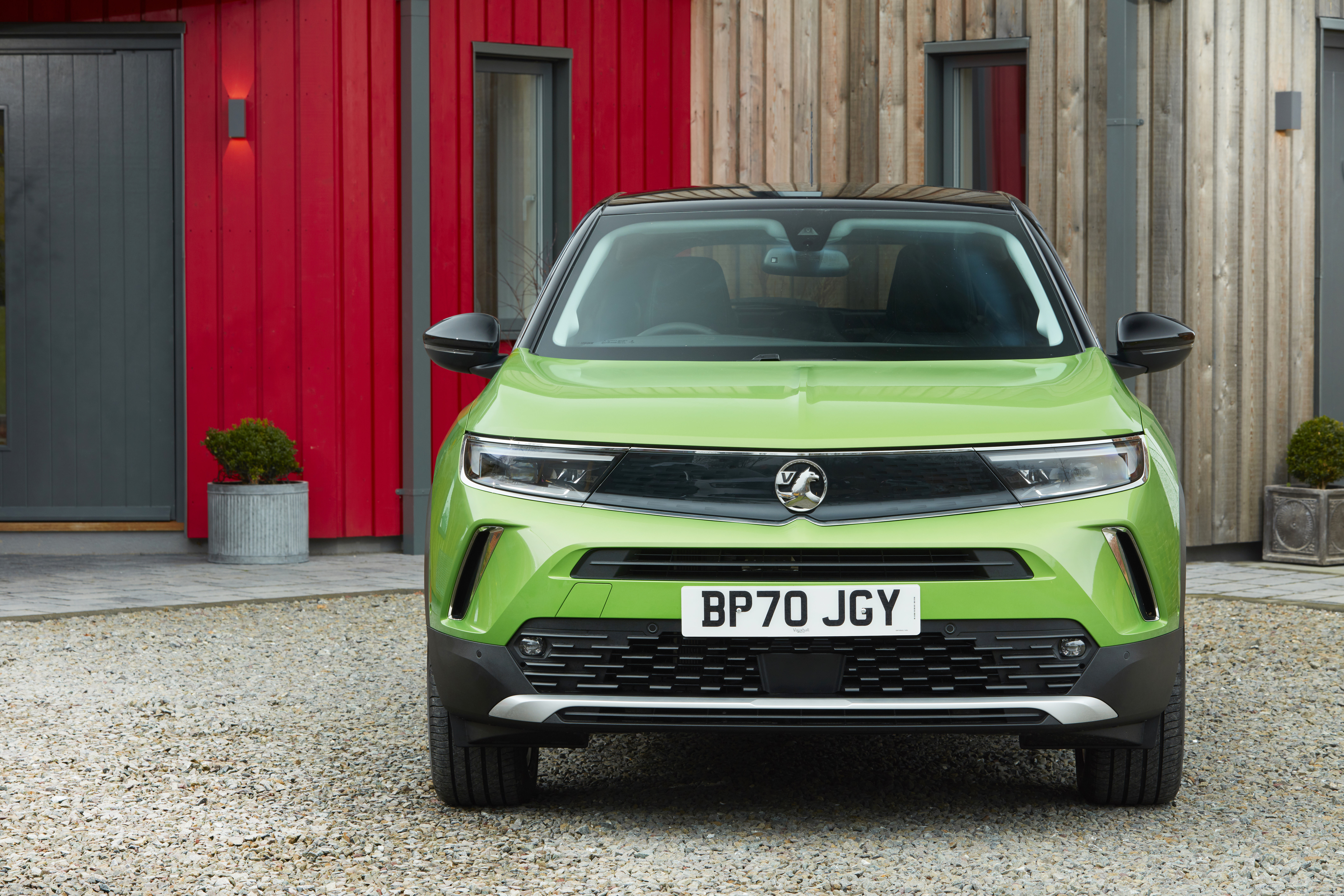
The 2021 Vauxhall Mokka-E spearheads Vauxhall's new 'Vizor' design language
Over the decades, Vauxhall has acquired a no-nonsense image, its vehicles representing a Platonic ideal of a car, MPV, or van. Some of the best-selling cars of the century are Vauxhalls, and their ubiquity affords a certain invisibility.
No one lusts over a Vauxhall, but chances are, there’s a model in the range that does everything – and more – that you actually need from a car. So how to shift this image?
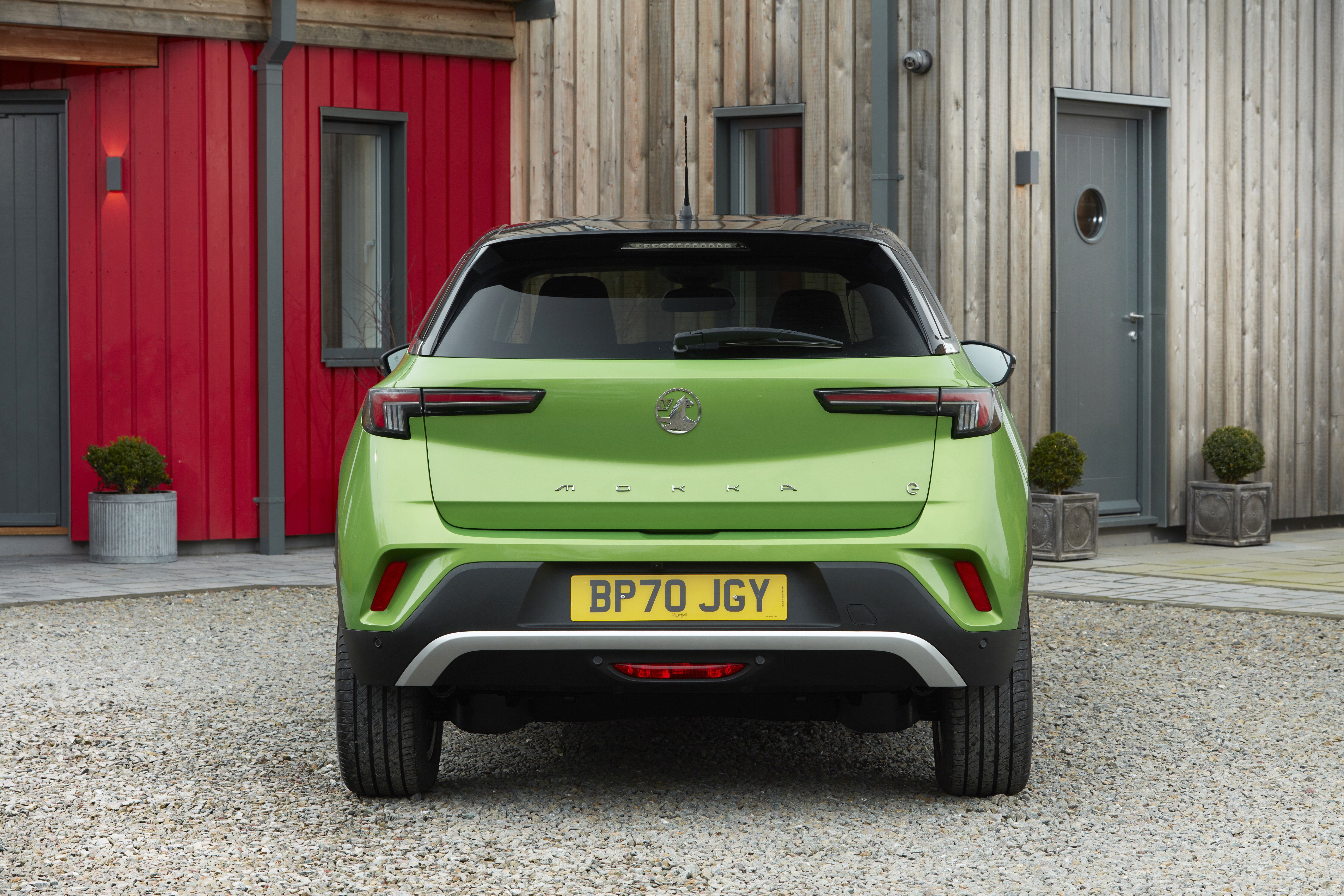
Neatly delineated, with sharp creases and minimal detailing, the Vauxhall Mokka-E is a departure for the brand
Vauxhall Mokka-E reveals new design direction
One answer is electrification, a central core of Stellantis’ vision. Vauxhall (and Opel) are poised to become the desirable face of middle market innovation. The new Mokka-E crystalises this ambition into a single, stand-out model. Although it’s also available as a conventionally powered car, the electrified Mokka offers a 201-mile range (about average, as these things go), but also supports ultra-rapid 100kW charging, which strengthens its use case.
The most important aspect of the car is its design, which stands out with much sharper, more pronounced creases and folds than its rivals, as well as a focus on a prominent ‘face’. Vauxhall calls this new approach ‘Vizor’ design, and it’s a welcome step away from the amorphous forms that had become so widespread in mass market car design, with overly stretched headlights and superfluous curves.
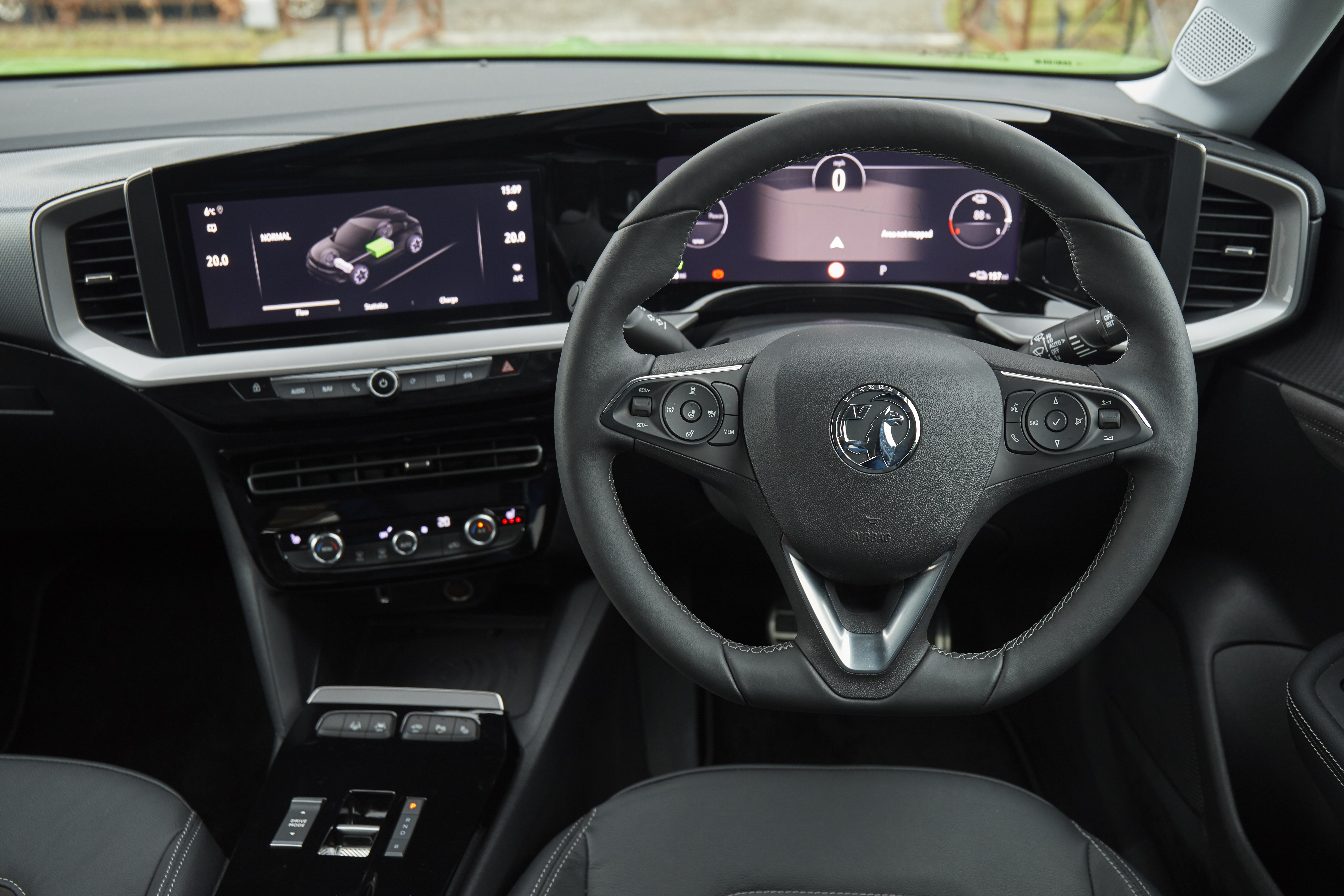
The 2021 Vauxhall Mokka-E interior has a premium feel, with unfussy graphics and tactile controls
The Mokka-E is a crisp and tightly delineated design. There’s a hint of the company’s last design heyday, back in the 1970s, when Vauxhall successfully Anglicised the angularity of American big-car design and turned it into something altogether unique.
Receive our daily digest of inspiration, escapism and design stories from around the world direct to your inbox.
The American designer Wayne Cherry headed up Vauxhall’s design studio from 1975, after a spell at General Motors. His ‘Droopsnoot’ version of the 1973 Firenza since became a modern classic, albeit not a strong seller. There was also Opel’s Manta model (one of the few Opel branded cars sold in the UK), a neat two-door coupé that was recently re-born as a one-off electric restomod.
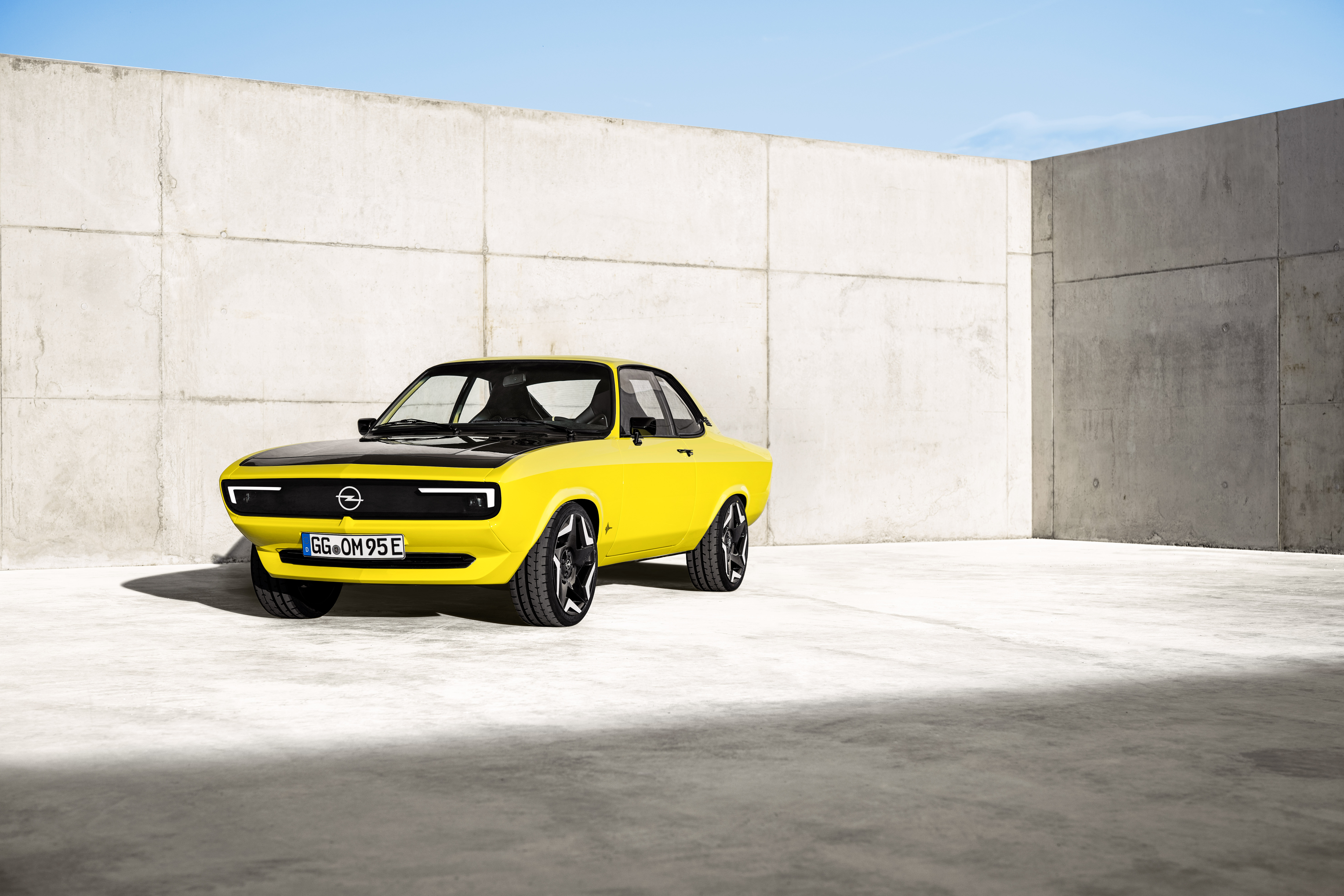
The new Opel Manta GSe ElektroMOD heralds a new playfulness from Vauxhall and Opel
The Mokka-E’s design taps into the straight edge forms of 1970s design, a visual language that is undergoing something of a revival. Although it’s ironic that an era of big-engined, high-polluting cars is now underpinning the aesthetics of electrification, there’s no denying that there’s freshness to these designs that has been missing for years.
Electrified Vauxhall line-up by 2028
Vauxhall is rolling out the Vizor language to its other models, including the Grandland and Crossland SUVs, as well as the all-new Corsa (the UK’s best-selling car), which will also be available as a pure electric vehicle for the first time. By 2028, the company expects its entire line-up to be fully electric.
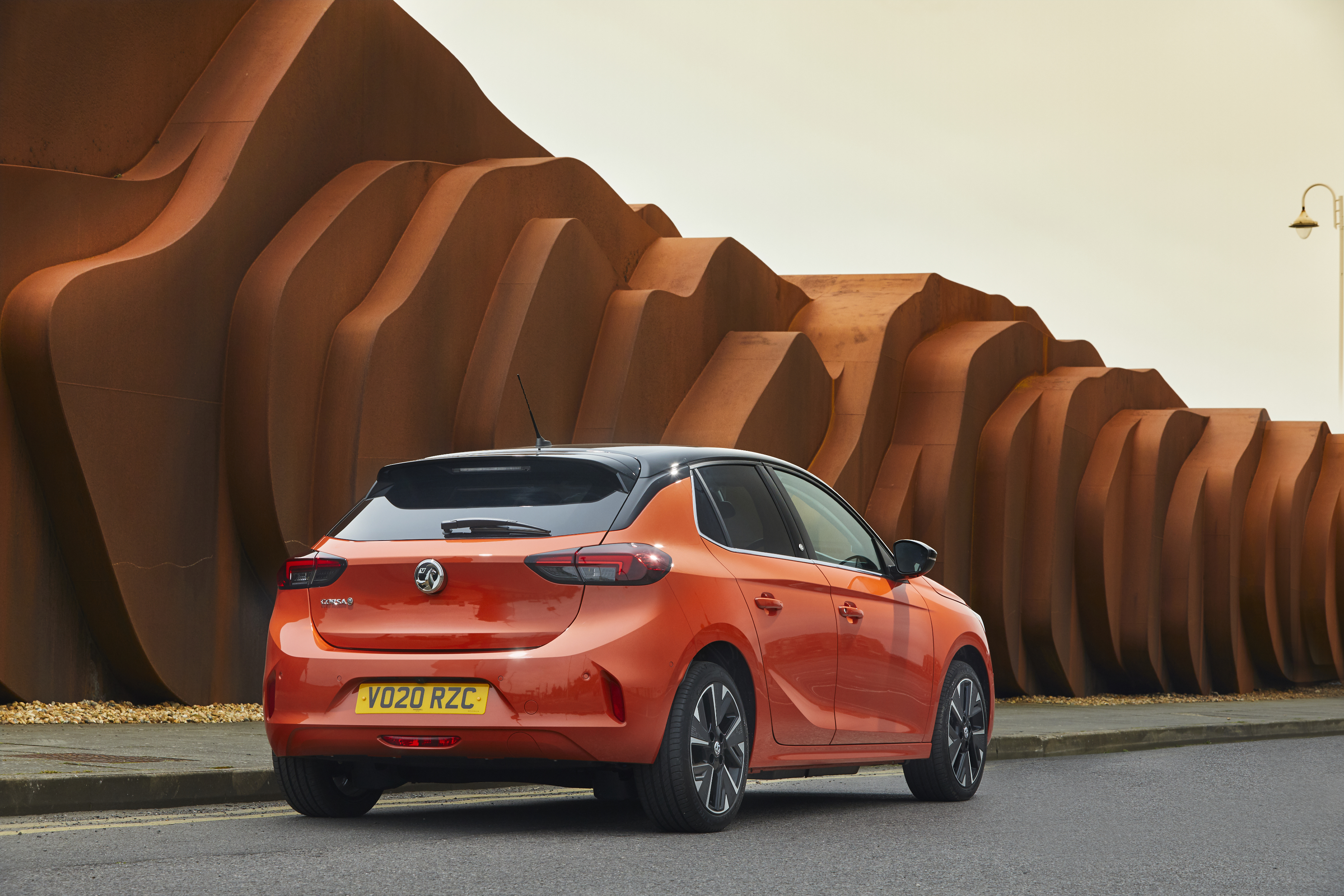
The new 2021 Vauxhall Corsa-E, alongside Heatherwick Studio's East Beach Café in Littlehampton
While the Mokka-E looks and drives in a very contemporary fashion, the company’s flagship model, the Insignia, has a mountain to climb to make a case for its existence.
There’s nothing wrong with the Insignia at all, but it epitomises Vauxhall’s longstanding role as a supplier of quiet but unstimulating competence. It’s pleasant to drive, well equipped, comfortable, and spacious; all these boxes are ticked without the Insignia inspiring much passion or emotion.

Detail design – seen here in the Mokka-E's LED headlights – is the key to tomorrow's Vauxhall
For those who crave simplicity without the distraction of status, Vauxhall’s older models are perfect. Yet big saloons and estates are fast dropping in popularity, just like conventional car sales. Leases, loans, hires and sharing are all here to shake up the market. Throw in the fact that business buyers for cars such as the Insignia are either switching to electric or vanishing altogether, while families switch to SUVs and crossovers, and you can see the writing on the wall.
Vauxhall’s electrification promises more design diversity, just as it does for every big company. The manufacturer that cracks the volume EV market will be welcome by those buyers who are crying out for individuality and innovation. Vauxhall will have to focus hard on its ‘E’ models to maintain its longstanding position of market leader.
INFORMATION
Vauxhall Mokka-E, from £30,840
Jonathan Bell has written for Wallpaper* magazine since 1999, covering everything from architecture and transport design to books, tech and graphic design. He is now the magazine’s Transport and Technology Editor. Jonathan has written and edited 15 books, including Concept Car Design, 21st Century House, and The New Modern House. He is also the host of Wallpaper’s first podcast.
-
 The rising style stars of 2026: Connor McKnight is creating a wardrobe of quiet beauty
The rising style stars of 2026: Connor McKnight is creating a wardrobe of quiet beautyAs part of the January 2026 Next Generation issue of Wallpaper*, we meet fashion’s next generation. Terming his aesthetic the ‘Black mundane’, Brooklyn-based designer Connor McKnight is elevating the everyday
-
 Mexico's Office of Urban Resilience creates projects that cities can learn from
Mexico's Office of Urban Resilience creates projects that cities can learn fromAt Office of Urban Resilience, the team believes that ‘architecture should be more than designing objects. It can be a tool for generating knowledge’
-
 ‘I want to bring anxiety to the surface': Shannon Cartier Lucy on her unsettling works
‘I want to bring anxiety to the surface': Shannon Cartier Lucy on her unsettling worksIn an exhibition at Soft Opening, London, Shannon Cartier Lucy revisits childhood memories
-
 Rivian hits Miami Art Week to release R1S Quad Miami Edition, a new colour and a scent
Rivian hits Miami Art Week to release R1S Quad Miami Edition, a new colour and a scentVivid sights and evocative smells are part of Rivian’s quest to humanise its all-electric SUVs
-
 RBW EV brings a much-loved classic sports car aesthetic into the modern era
RBW EV brings a much-loved classic sports car aesthetic into the modern eraThe RBW Roadster and GT hark back to a golden age of sports car design. Under the skin, these British-built machines feature bespoke all-electric running gear
-
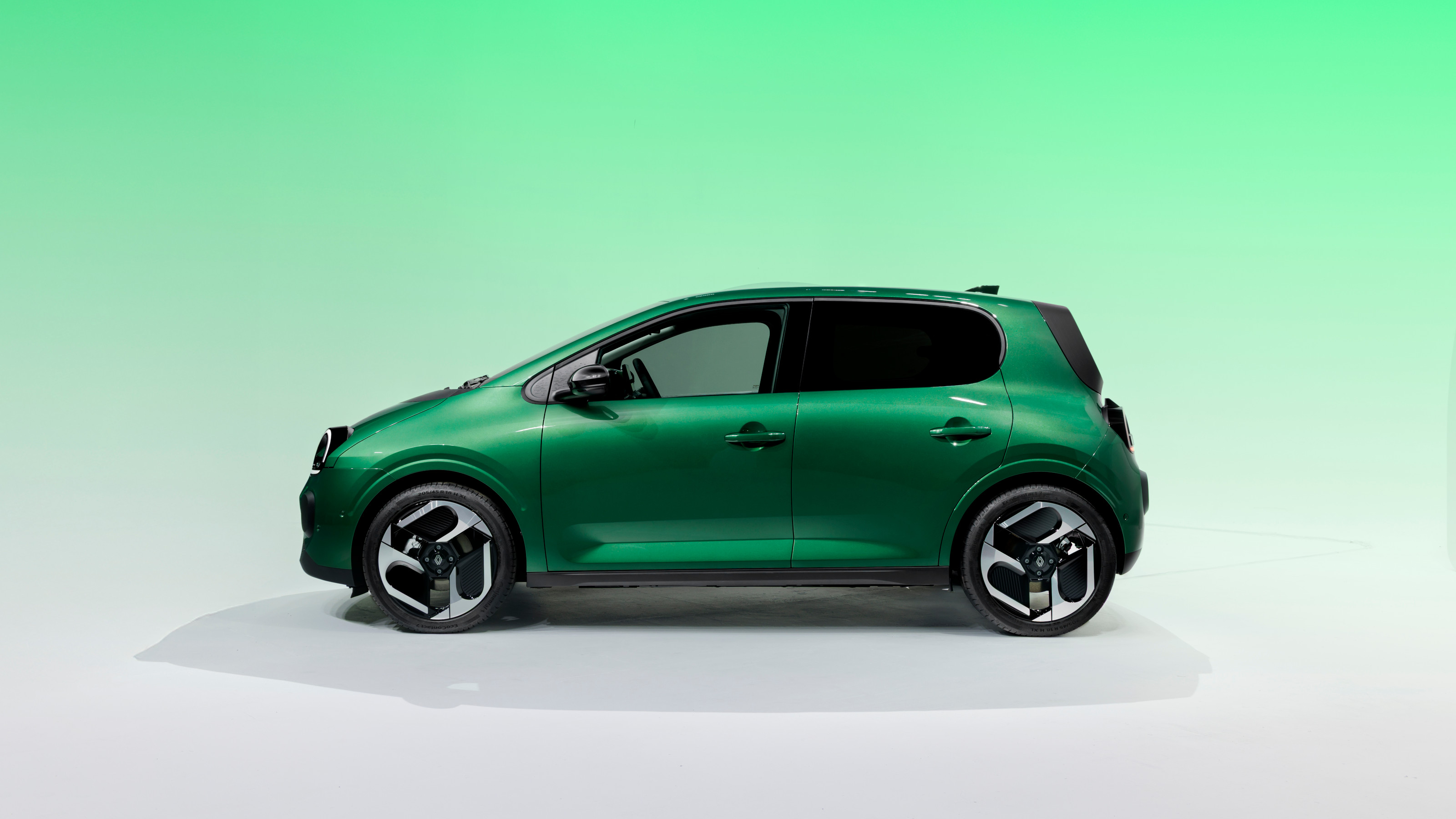 All hail the compact new Renault Twingo E-Tech – the city car is back in style
All hail the compact new Renault Twingo E-Tech – the city car is back in styleRenault continues to pay homage to its heritage by combining it with 21st-century technology. The new Twingo E-Tech is another winner
-
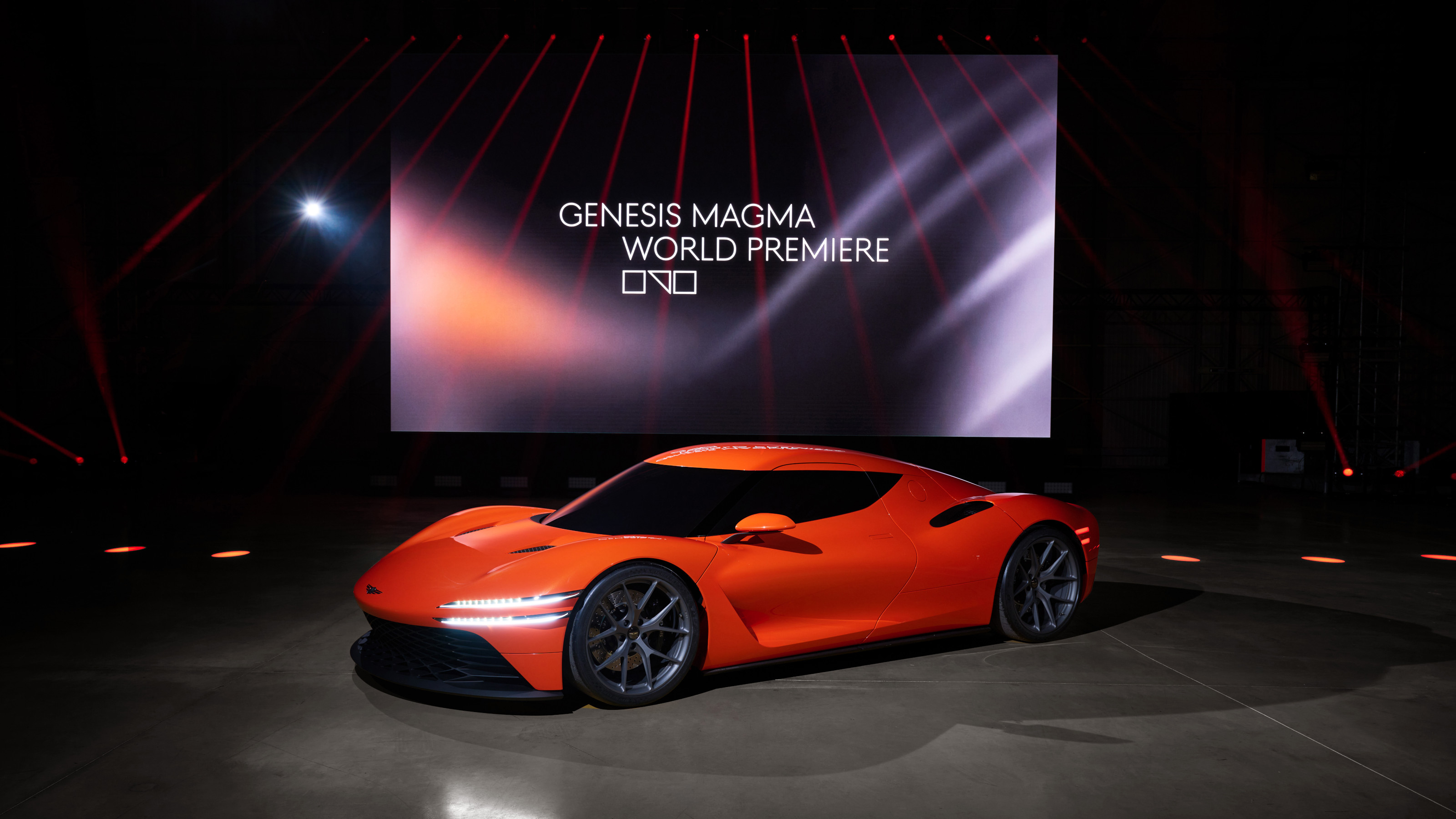 Genesis turns up the heat with its new Magma performance sub-brand
Genesis turns up the heat with its new Magma performance sub-brandGenesis has revealed the hot new GV60 Magma and striking Magma GT Concept in its quest to own luxury performance
-
 Around London in sybaritic silence with the majestic all-electric Lunaz Phantom V
Around London in sybaritic silence with the majestic all-electric Lunaz Phantom VClassic electrifier Lunaz has turned its skilled hands to the Rolls-Royce Phantom V. We sample the ultimate in zero-emission luxury on the streets of London
-
 Avatr Vision Xpectra concept transforms cars into ‘emotionally intelligent companions’
Avatr Vision Xpectra concept transforms cars into ‘emotionally intelligent companions’Revealed in Munich, electric car maker Avatr’s futuristic Vision Xpectra is a car that is not only beautiful, but a true form of ‘emotive luxury’
-
 Dacia wants to make small cars great again – all hail the new Hipster Concept
Dacia wants to make small cars great again – all hail the new Hipster ConceptThe best way to minimise energy use in all its forms is to downsize. The Dacia Hipster Concept is a smart way of making a practical car way more pint-sized
-
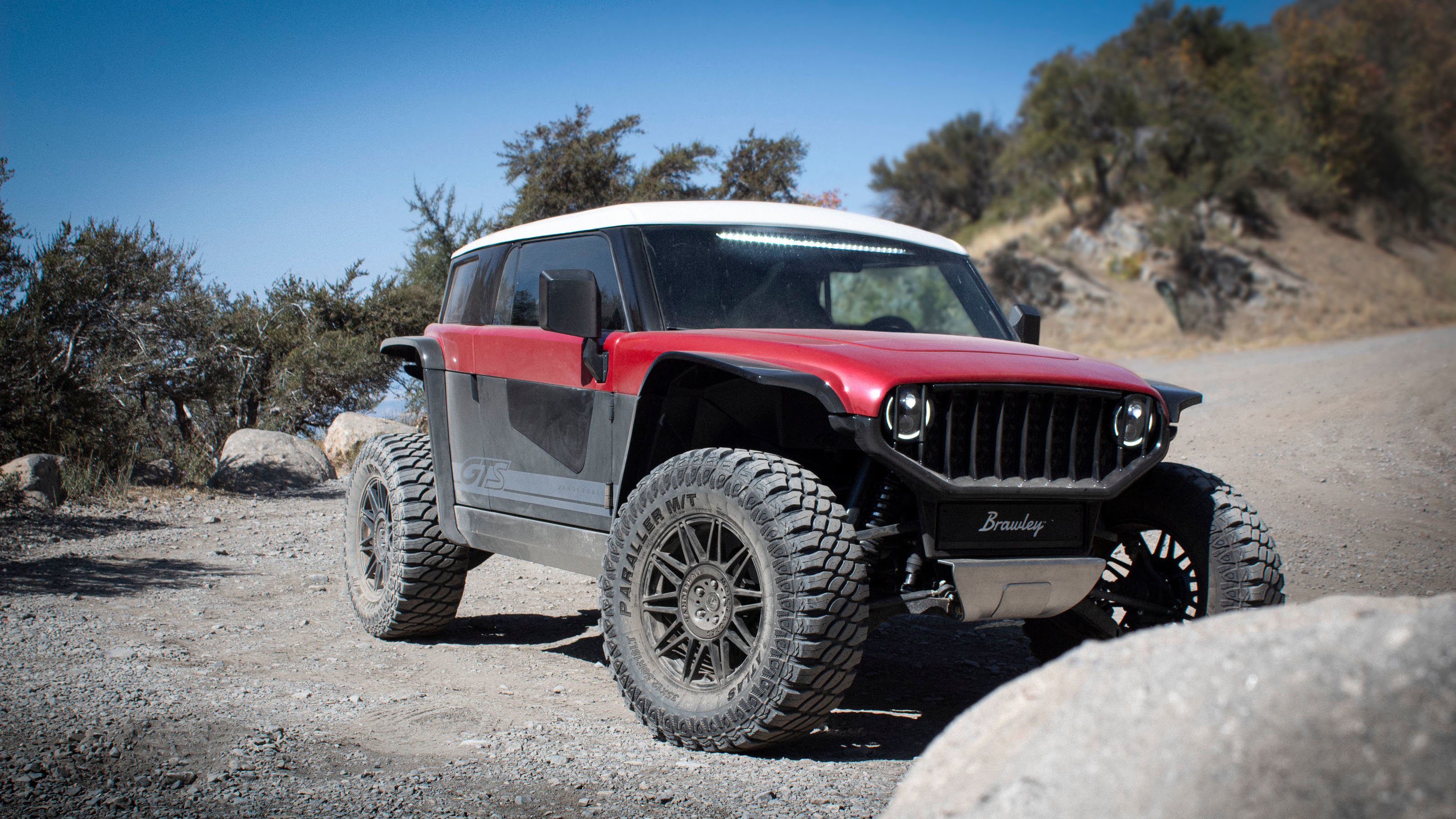 The Vanderhall Brawley GTS is a compact but mighty electric off-roader
The Vanderhall Brawley GTS is a compact but mighty electric off-roaderDeliveries of Vanderhall’s Brawley GTS have started, bringing zero-emission trail driving to enthusiasts across America